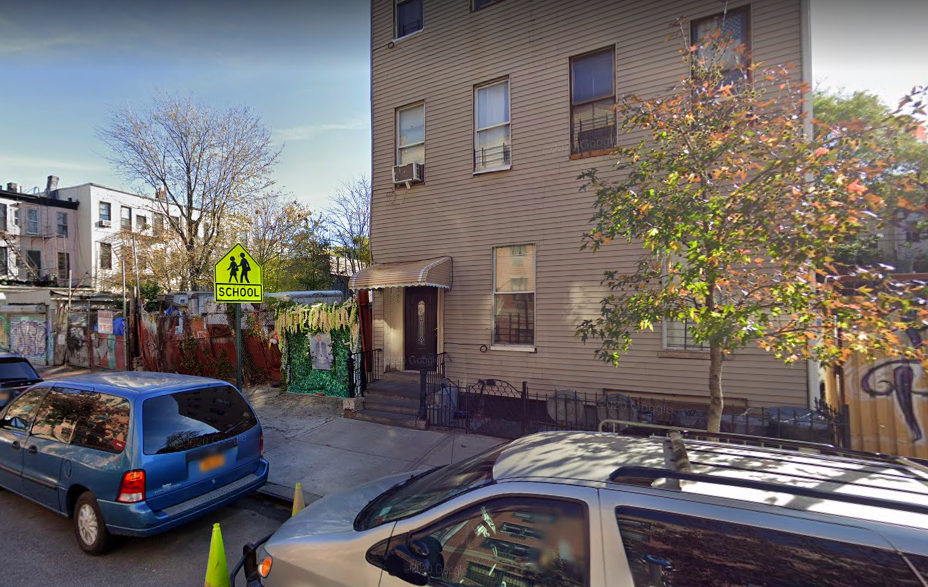Two weeks ago, the New York City Council approved a bill making its Open Streets program permanent. The program closes certain streets to car traffic and was initiated during the pandemic to give pedestrians and cyclists more space to social distance. (Open Streets is separate from the Open Restaurants program, which allows restaurants to put outdoor seating on city property).
The new Open Streets bill was sponsored by city councilwoman Carlina Rivera and includes a requirement that the Department of Transportation annually study streets in the program to determine if further changes should be implemented, such as converting to a shared street or a pedestrian plaza. This means New York City has a new mechanism to permanently close streets to car traffic—and partial control of this mechanism rests with community groups.
“This program, in and of itself, will ultimately lead to the banning of cars on the streets,” said Rivera, who represents District Two in Manhattan, when we spoke by phone last week.
The implications of allowing community organizations to nominate their own streets for the Open Streets process could be huge, Rivera says, because it puts a lot of power in the hands of community groups. Rivera sees this as the first step in rebuilding New York City streets in a way that is better for all people, not just drivers.
“Open streets improve the quality of life for pedestrians, cyclists, and local neighbors, as well as deter bad and potentially dangerous driver activity like speeding,” Rivera said.
While a permanent Open Streets program holds promise for transforming what New York City streets look like, previous versions of the program have been criticized for helping some neighborhoods more than others. There are also reports of systemic problems enforcing the program. The newly passed city council bill, Int. 1933-A, attempted to address some of these concerns.
The Open Streets program was first piloted by the de Blasio administration in March 2020, but it was initially stopped after only 11 days. An emergency version of the program, introduced by Rivera and Council Speaker Corey Johnson, has been in effect since April 2020.
In addition to making the program permanent and requiring an annual study by the DOT, the new bill requires that the DOT “manage or provide resources to at least 20 open streets sites in areas that would be otherwise underserved by the program” and “provide resources to other open streets as available.”
“We want to make sure that we have community-led open streets that can run successfully with real staffing and support from our city, not just from volunteers who can face threats from hostile neighbors, or some who have had to pay out of pocket for expenses or for operations,” Rivera said. “Many communities can’t independently fundraise the way others can, and we have to be aware of that.”
Bushwick, however, is a good example of a community that does not have very many open streets. In fact, according to a city database, there is not one street in the neighborhood that is subject to a “Full Closure.” Instead, there are six streets that have “Temporary Limited Local Access,” which means no through traffic is allowed.

I checked out a few of the Bushwick streets that are part of the program to see what “Temporary Limited Local Access” means. I found absolutely nothing: there was no signage indicating the streets were subject to any restrictions and there were no barriers on the street.
Ellery Street is supposed to have limited local access between Broadway and Beaver Street, but the street, instead, had a constant stream of cars. While it’s possible that all the cars were local, I spoke to three people on the street who lived or worked in the immediate area: none of them knew anything about a change to the car accessibility of the street.
Next I went to Humboldt Street, which is supposed to have limited local access between Moore Street and Flushing Avenue. It was packed with cars. Same with Moore Street, which is supposed to have limited access between Humboldt Street and Bushwick Avenue, and Noll Street, which is supposed to be limited between Central Avenue and Evergreen Avenue.
The key to why certain neighborhoods have fewer open streets with full closures has to do with whether the streets are managed by a local organization or by the city. In Brooklyn, there are 17 streets with full closures, all of which have a community group attached. None of the Bushwick open streets are managed by a local group.
Rivera thinks the new bill includes enough support from the city to make sure community groups can be started in all neighborhoods that want open streets.
“We have DOT making this pledge to provide applicant mentorship, to do real community outreach, particularly in communities of color,” Rivera said. “That is the way we can make sure this serves all of the communities that want it and where it is appropriate, not just in a few privileged neighborhoods.”
Top photo credit: Nate Torda
For more news, sign up for Bushwick Daily’s newsletter.
Join the fight to save local journalism by becoming a paid subscriber.



